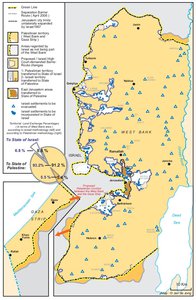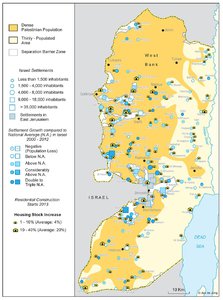THE WEST BANK TODAY (2014)
Map Details
In June 2009, the recently inaugurated Israeli Prime Minister Netanyahu declared his support for a demilitarized
Palestinian state alongside Israel if the Palestinians recognized Israel as the Jewish homeland. Three
months later, US President Obama met with Netanyahu and PA President Abbas, calling on them to revive
the peace process. While both leaders stated they wanted negotiations to resume, this did not happen until
a year later. Perhaps emboldened by his 2009 Nobel Peace Prize win, President Obama set the deadline
for the conclusion of a comprehensive Israeli-Palestinian peace deal at only one year after the beginning of
the talks in September 2010. However, the negotiations collapsed within a month when the Palestinian
leadership put a halt to the talks because Israel refused to extend a partial West Bank settlement freeze it
had initiated 10 months earlier. In October Netanyahu announced that Israel would only extend the freeze if
the Palestinians recognized Israel as the state of the Jewish people, something the PA had made clear it
was not willing to do. Unsurprisingly Abbas refused, the negotiation table remained empty, and settlement
construction continued.
When Fatah and Hamas reached an agreement to form a Palestinian national unity government in April 2017,
Prime Minister Netanyahu condemned the reconciliatory move, stating that the PA would have to choose between
making peace with Israel and making peace with Hamas, since the Hamas goal of destroying Israel
made these two objectives incompatible. Abbas insisted that Palestinian unity was an important condition for
reaching a two-state solution and announced that if the impasse in negotiations continued, the PA would
submit a request for international recognition of the State of Palestine to the UNGA after the one-year Obama
deadline passed. When negotiations did not resume, Abbas applied for full Palestinian membership of the UN
in September.After the bid failed and the peace process remained on halt over the next year, the PA
applied for, and was granted, the status of "non-member observer state" on 29 November 2012.
After President Obama's first trip to Israel in March 2013, US Secretary of State John Kerry stayed behind to
revive the peace process. By July, Kerry had convinced both sides to resume negotiations with the aim of
reaching a final status agreement within nine months. The negotiations were in part made possible by
Palestinian pledge to halt its campaign for international recognition of the state of Palestine, as well as an
Israeli agreement to the phased release of 104 long-term Palestinian prisoners. Substantial talks began on 14
August. In January 2014, following months of talks without any sign that the parties were getting closer to a
peace deal, John Kerry pushed both sides to first agree on a common "framework" for final status talks. In
late March, Israel refused to release the last 26 Palestinian prisoners, stating the PA should first agree to an
extension of the peace talks beyond the April 29 deadline. In response, Abbas signed Palestine up to 15
international conventions. Israel then approved the construction of over 700 settlements in East Jerusalem
and imposed economic sanctions against the PA. While it was obvious that the Kerry peace process was
dead by this time, negotiations were officially still ongoing until Israel suspended them on 24 April, one day
after Fatah and Hamas signed an agreement to form a unity government. Israel stated it would not negotiate
with Hamas, a "terrorist organization that calls for the destruction of Israel." Although President Abbas
subsequently declared that any Palestinian unity government would recognize Israel, denounce violence and
accept all previous agreements between Israel and the PA, Israel did not change its position.
While the Obama administration has publicly blamed both sides for the failure of the peace talks, various
US officials – including Kerry – have identified Israel's continuing settlement expansion as the major spoiler
in the peace process. During the nine months of talks, Israel had issued tenders for almost 5,000 settlement
housing units in the West Bank and East Jerusalem and promoted plans for close to 9,000 additional
units, while it demolished over 500 Palestinian structures. These actions are part of a broader trend of
Israeli colonization of the West Bank and East Jerusalem through the establishment of "outposts" on Palestinian
land and the subsequent construction of settlements on that land, combined with the simultaneous
destruction of Palestinian homes and buildings. From 2009 to 2013, Israel started construction on close to
7,500 settlement units in the West Bank. While the number of construction starts dropped significantly
from 2009 to 2010, it increased again over the next years and more than doubled to over 2,500 in 2013,
marking the highest yearly total in over a decade. In East Jerusalem, settlement expansion has also continued,
with the number of issued tenders skyrocketing from 2012 onwards and reaching a record high of over
2,500 during the nine months of the Kerry peace talks. Unsurprisingly, the settler population in the West
Bank and East Jerusalem has grown considerably over the years, from close to 300,000 at the time of the
Oslo Accords to 560,000 as of 2014. Furthermore, between 2009 and 2013 over 2,500 Palestinian structures
where demolished in Area C and East Jerusalem, displacing over 4,300 Palestinian residents. The
yearly totals were highest in 2013, with over 660 demolitions and over 1,100 displacements recorded. To
make things worse, tension has been rising in the West Bank, especially since 2013, which saw the highest
yearly total of Palestinian injuries from conflict-related violence since 2005 and more Palestinian deaths
than the two previous years combined. With the peace talks at a dead end since the collapse of the Kerry
process and Israel's creeping colonization picking up speed, the chances of a viable two-state solution ever
becoming a reality now seem slimmer than ever.
Related Maps
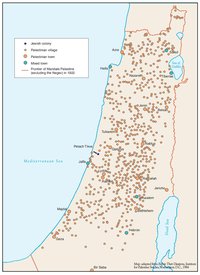
OTTOMAN PALESTINE, 1878
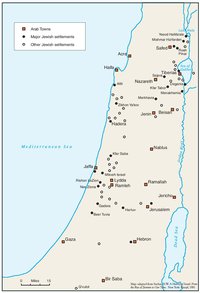
ARAB TOWNS AND JEWISH SETTLEMENTS IN PALESTINE, 1881-1914
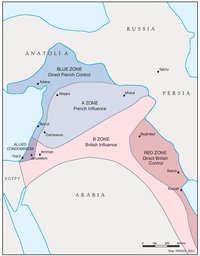
THE SYKES-PICOT AGREEMENT, 1916
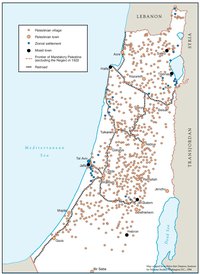
THE BEGINNING OF THE BRITISH MANDATE, 1920
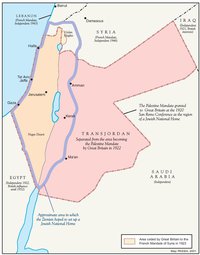
PALESTINE UNDER THE BRITISH MANDATE
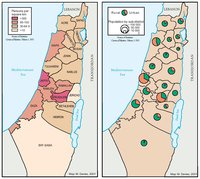
THE DEMOGRAPHY OF PALESTINE, 1931
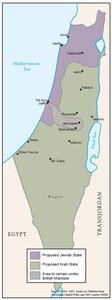
THE PEEL COMMISSION PARTITION PROPOSAL, 1937
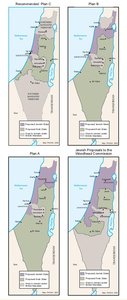
THE WOODHEAD COMMISSION PARTITION PROPOSALS, 1938
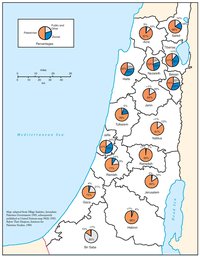
PALESTINIAN AND ZIONIST LANDOWNERSHIP BY SUB-DISTRICT, 1945
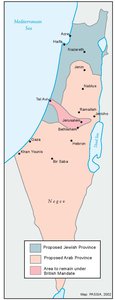
THE MORRISON-GRADY PARTITIONED TRUSTEESHIP PLAN, 1946
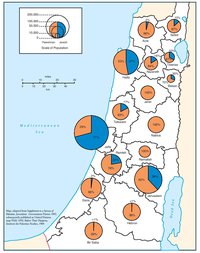
POPULATION OF PALESTINE BY SUB-DISTRICT, 1946
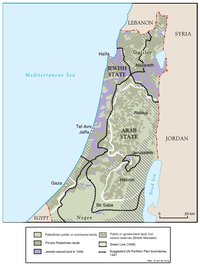
LAND OWNERSHIP IN PALESTINE, 1948
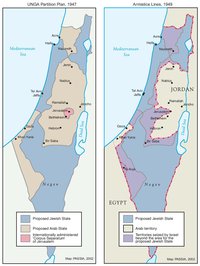
THE UNGA PARTITION PLAN, 1947 – THE 1948 WAR & THE 1949 ARMISTICE LINES
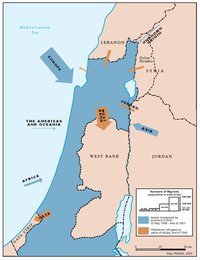
POPULATION MOVEMENTS, 1948-1951
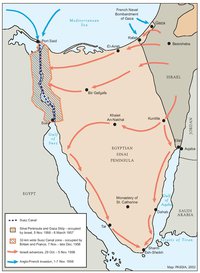
THE SUEZ WAR, 1956
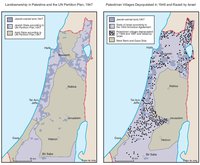
LAND OWNERSHIP IN PALESTINE AND THE UN PARTITION PLAN - PALESTINIAN DEPOPULATED AND DESTROYED VILLAGES, 1948-1949
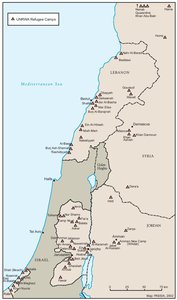
THE PALESTINIAN DIASPORA, 1958
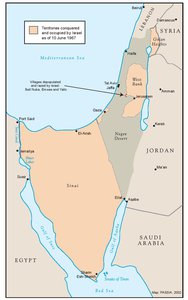
THE NEAR EAST AFTER THE JUNE 1967 WAR
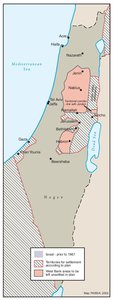
THE ALLON PLAN, JUNE 1967
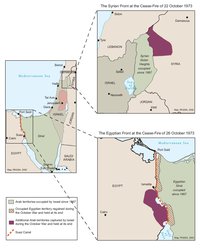
THE OCTOBER WAR, 1973
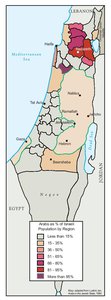
THE PALESTINIANS INSIDE ISRAEL, 1977
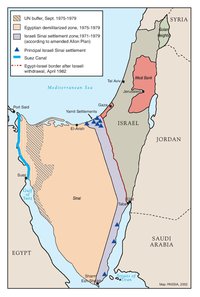
THE CAMP DAVID ACCORDS, 1978-1979
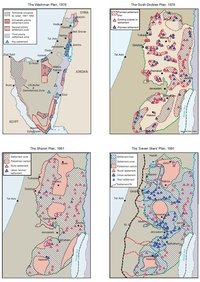
ISRAELI SETTLEMENT MASTER PLANS, 1976-1991
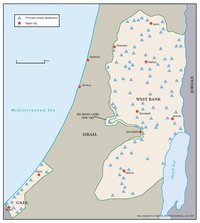
THE 1991 MADRID PEACE CONFERENCE & ISRAELI SETTLEMENTS
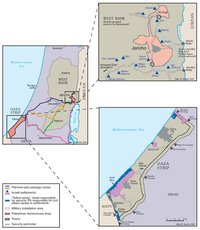
GAZA-JERICHO (OSLO I) AGREEMENT, CAIRO, 4 MAY 1994
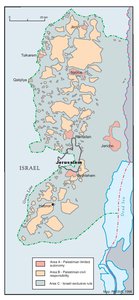
INTERIM (OSLO II) AGREEMENT, TABA, 28 SEPTEMBER 1995
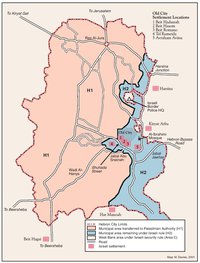
HEBRON PROTOCOL, 15 JANUARY 1997
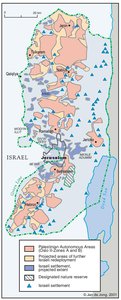
WYE RIVER MEMORANDUM, 23 OCTOBER 1998
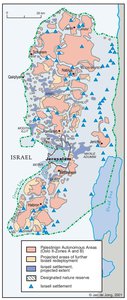
SHARM ESH-SHEIKH AGREEMENT, 4 SEPTEMBER 1999
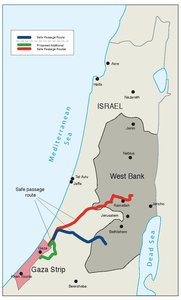
PROTOCOL CONCERNING SAFE PASSAGE BETWEEN THE WEST BANK AND THE GAZA STRIP, 5 OCTOBER 1999
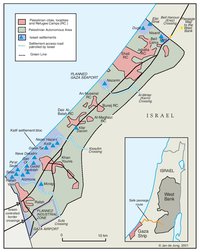
GAZA, 2000
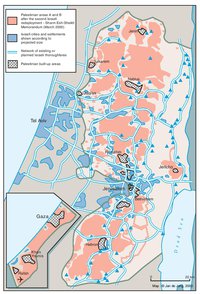
WEST BANK AND GAZA STRIP, MARCH 2000
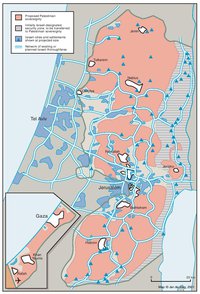
CAMP DAVID PROJECTION, JULY 2000
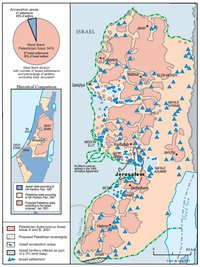
TABA TALKS PROJECTION, JANUARY 2001
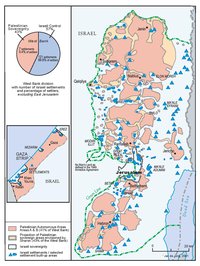
THE SHARON PROPOSAL, SPRING 2001
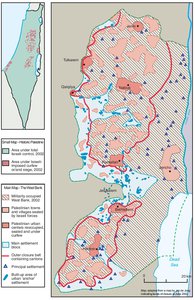
THE REINVASION OF THE PALESTINIAN TERRITORIES, 2001-2002
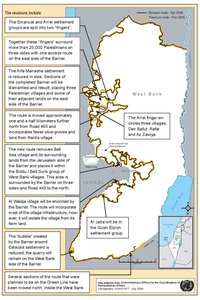
THE ROAD MAP, 2003
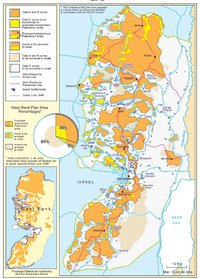
THE GENEVA INITIATIVE AND ACCORD, 2003
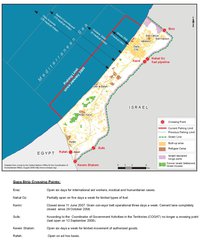
THE ISRAELI DISENGAGEMENT PLAN, 2003-2005
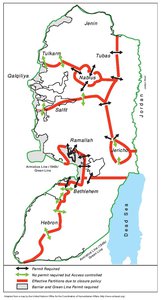
AGREED DOCUMENTS ON MOVEMENT AND ACCESS FROM AND TO GAZA, 2005
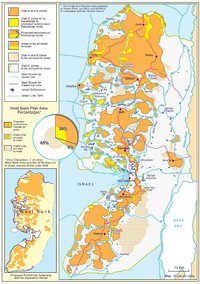
THE SETTLERS' PLAN FOR PALESTINIAN AUTONOMY, 2006
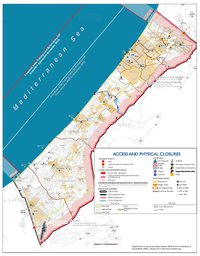
THE GAZA STRIP TODAY (2014)
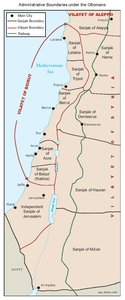
ADMINISTRATIVE BOUNDARIES

HEBRON
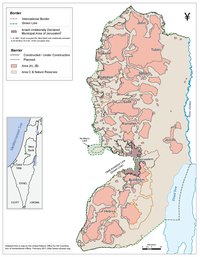
Area C
